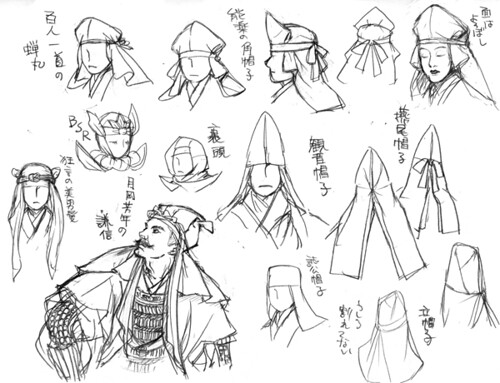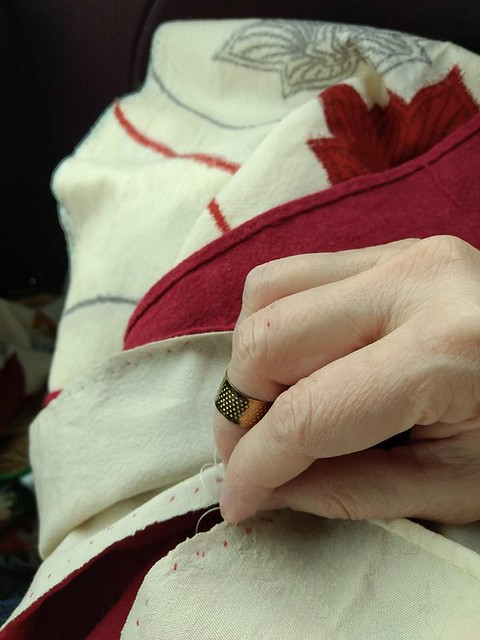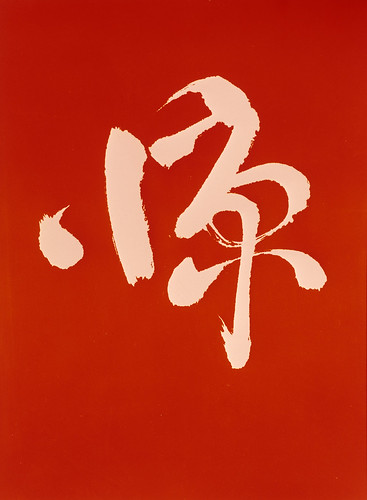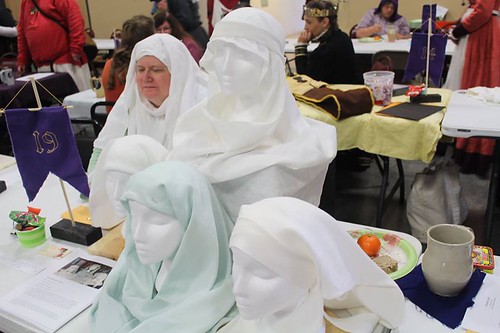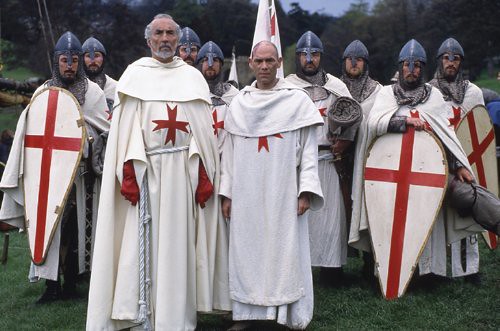
Life goals: an oxcart of my very own. From the Ishiyama-dera engi emaki 石山寺縁起絵巻, Roll 3, Section 1 (approx. 14th century). Picture credit Wikimedia commons.
About a month ago, the Peers in the Kingdom of Calontir had meetings to discuss certain aspects about peerage. Not specific persons, but of peerage itself. Calontir being Calontir, of course those of us not so graced also had things to say. Lord Hugo van Harlo wrote up a few topic questions which definitely made me think, and I wanted to discuss my thoughts here, being an Award Of Arms holder of long standing (my AOA having just celebrated its 24th anniversary. It is now out of university and looking for an honest living, bless its heart.)
TOPIC ONE: UPPING YOUR GAME AND FINDING SATISFACTION
The SCA is host to a wildly diverse range of activities and approaches. How do we find our place in it, find satisfaction in how we approach it, and do it without going broke–all amidst an uncertain sea of awards, recognition, student-teacher relationships, and peerage “tracks?”
This is a big and somewhat ambitious topic. For a little bit of background, I’ve been involved with the SCA since 1991 (about 27 years), have lived in three kingdoms and visited several others. I’ve been an armored fighter, an arts and sciences enthusiast, and a service junkie. Not all my time in the SCA has been terribly active, as life does happen. I’ve had to step away while taking care of a sick parent, getting married, moving several times, working a demanding job, and dealing with some serious health issues of my own. But I never completely quit the hobby, just went from very active to not very active and back again as needed.
The SCA is extremely diverse, and that diversity is one of its greatest strengths. There are some boundaries (which, interestingly, have changed over the time I’ve been in), but they are very flexible. The basic requirements as stated in Corpora (law) are these: Anyone may attend Society events provided he or she wears an attempt at pre-17th century clothing, conforms to the provisions in Corpora, and complies with any other requirements (including but not limited
to site fees or waivers) which may be imposed. At business meetings and informal classes, the requirement to wear pre-17th century dress may be waived. All participants are expected to behave as ladies or gentlemen. Note that you do not even have to be a member to participate in many SCA activities (such requirements do vary by kingdom), although being a member does give one a small discount to events.
Many of us got our start in the SCA as young people, either as impoverished students or impoverished young adults. So having this diversity helps. A new member just needs to wear very basic garb (a tunic works great), and look around to see what of the many facets of the SCA catches their attention. The fact that there isn’t the same kind of rigorous authenticity standards found in many other living history groups allows a new person a chance to slowly build up skills and yet still participate. It’s really a wonderful way to get people started.
The wide range of time periods and localities allowed (any culture that had contact with Western Europe before the year 1600 is fair game) gives many people a chance to explore what is important to THEM. Some people, like myself, end up having more than one persona, exploring more than one time or culture. Others like to narrow in on a particular time and place and learn as much as they can about it. It’s all good. And that is delightful. I love seeing what other people find out as they explore the history that interests them.
So how does one find ones place in the SCA? There are a thousand answers, each one of them correct. One person may wish to explore their family’s heritage. Another person’s imagination may be caught by a time or place completely unrelated to their ethnic heritage. Some people just pick an appropriate-sounding name and bounce around from topic to topic. There is no one right way to do this.

The Ivanhoe movie from 1982, which started me on my Ivanhoe addiction. Sam Neill as Brian DuBois Gilbert with Anthony Andrews as the heroic Wilfred of Ivanhoe.
For myself, I started out doing 16th century Austrian. My senior thesis at University was on the relationship between the two Habsburg brothers who ruled much of Europe in the early 16th century, Charles and Ferdinand. I had also portrayed a Habsburg archduchess while working at a local renaissance fair while I was in high school and college, so I tweaked the name a little and continued with the same persona. Later, after I married and followed my Iowan husband back home to his native state, I decided to explore an Anglo-Saxon persona. My main inspiration was a 19th century work of historic fiction, the book Ivanhoe, one of my favorite works since my teenaged days. Then a few years later, I gave in to my passion for Japanese culture, and chose to have a Japanese persona, which is what I use today. However, you’re just as likely to find me in European garb as in Japanese clothing. I love costumes and like to wear a variety of outfits as the mood takes me. If anyone asks, I just tell them it’s my nindo (ninja way). 😉
Finding satisfaction is another very personal issue. From time to time, ask yourself, “Why am I doing this? What brings me the most joy?” The answer one hears from many people has to do with the people they meet and the friends they make through this hobby. That is certainly a large part of what keeps me going, but for me, the SCA offers me a venue in which I can explore history as I want, in the company of like-minded people who also share my passion for history.
The chatelaine in the Barony of the Flame (Louisville, KY) gave me some words of advice when I got started in the SCA. She told me, “This hobby will end up taking up much of your time, or your money, or even both.” At first, I thought that was a rather down-beat thing to say to a complete newbie, but the years have proven the truth of those words. There’s no getting around it–the SCA can be an expensive hobby and an intense one. There are ways to do this hobby on a budget (for many years, most of my garb was made from thrift store cotton sheets or things I could find from the clearance aisles at JoAnn’s or Hancock’s). It took me a long time to get my armor together–even though I had the use of someone’s shop and their teaching skills for free, the materials still cost and the construction took the better part of a year. We bought our bows used–they’re not the best, but they work.
That chatelaine was right in another way: the longer you are in, the more you may want to “up your game”, which means you fork out for better materials and spend more time doing research or construction. Usually, a person will want to give back to their local group in service, and devote time towards helping out at events.
I’ve really struggled with this issue. Budgeting becomes more complex as one gets older, maybe acquires a spouse or partner, a house, car, children, pets, the detritus of everyday life. Some jobs require weekend work. Sometimes, vacation time needs to be devoted to visiting family rather than going to events. How do you choose, especially if you’re trying to improve your SCA game?
There is no right answer. For me, my husband and family must come first, always. Neither of our parents live close-by, so we have to save vacation time/money to visit them, especially as they are growing older. My husband has other hobbies outside the SCA, and it’s only fair I support him as he has always supported me. You have to listen to your heart and do what you think is best for your situation (and never take flack from anyone who tells you differently! Only you know what is really going on in your life!)
For me, improving my game has been a very long process, and not everything has happened at once or on every level. I’ve tried very hard to make my garb look more authentic–I may machine-sew the inner seams, but every outer stitch is done by hand. I try to keep to period-looking footware. It passes the 10-foot rule, but there’s room to grow. I might take modern shortcuts for financial reasons, or if I’m in a hurry, but try to research the heck out of anything I present in a display or competition.
In my early years, authenticity just didn’t matter that much to me. I was just happy to be able to sew on my own, or any other art that came along. Mistress Bianca Rosamund, my first calligraphy teacher, taught me with modern tools and methods. Her belief (one I share) is that you learn the skill-set (calligraphy, painting) with modern tools so you don’t get frustrated, then progress to more period equipment as your skills improve and you can manage them better. My current shodo teacher feels much the same way. And thank goodness, the SCA is designed in a way that people can progress towards more authentic methods at their own pace.
It’s a road and we’re all always learning.
Finally, we come to awards. As someone who has been passed over many times for awards, I’m probably not the best to speak about how to navigate those waters. It was 3 years until I got my AOA, then 9 years and another kingdom until my next two awards (6 months apart). All of these were AOA-level awards. It has been over 14 years since my last award. And my husband is one of those legendary below-the-radar guys who waited 20 years before even getting an AOA. So obviously, I’m not a fan of the current award system.
However, if I try to think about it too much, I get bitter. So instead, I write in a list of people once or twice a year, and I make sure to attend court to cheer on those who have been recognized. Someone was there to cheer me on when the Midrealm’s King Jafar (of blessed memory) called me up in court to give me my Award of Arms. I feel it’s my duty to pass on that cheer to my AOA-siblings. I may not even know you in person, but well done, good job!
I will admit to some tears when I’ve been passed over yet again, but after so many years, I can safely say that no, awards and recognition are not what keep me in the SCA. The same can be said of my husband, who went right back below the radar and hasn’t been noticed by royalty since his AOA 15 years ago.
One thing I might add about awards, though–there are Baronial awards available for those who live in Baronies, but for those of us who reside out in the Shires, at least in Calontir, there is nothing. Maybe something can be done about that–perhaps the Baronages can spread out their awards among the Shires near them. Everyone could use a little pick-me-up.
I think I will address student-teacher relationships and peerage “tracks” in another post. This one is quite long on its own.
I would love to hear other SCAdian thoughts on these subjects, especially from other non-peers.
 Photographer unknown.
Photographer unknown.
